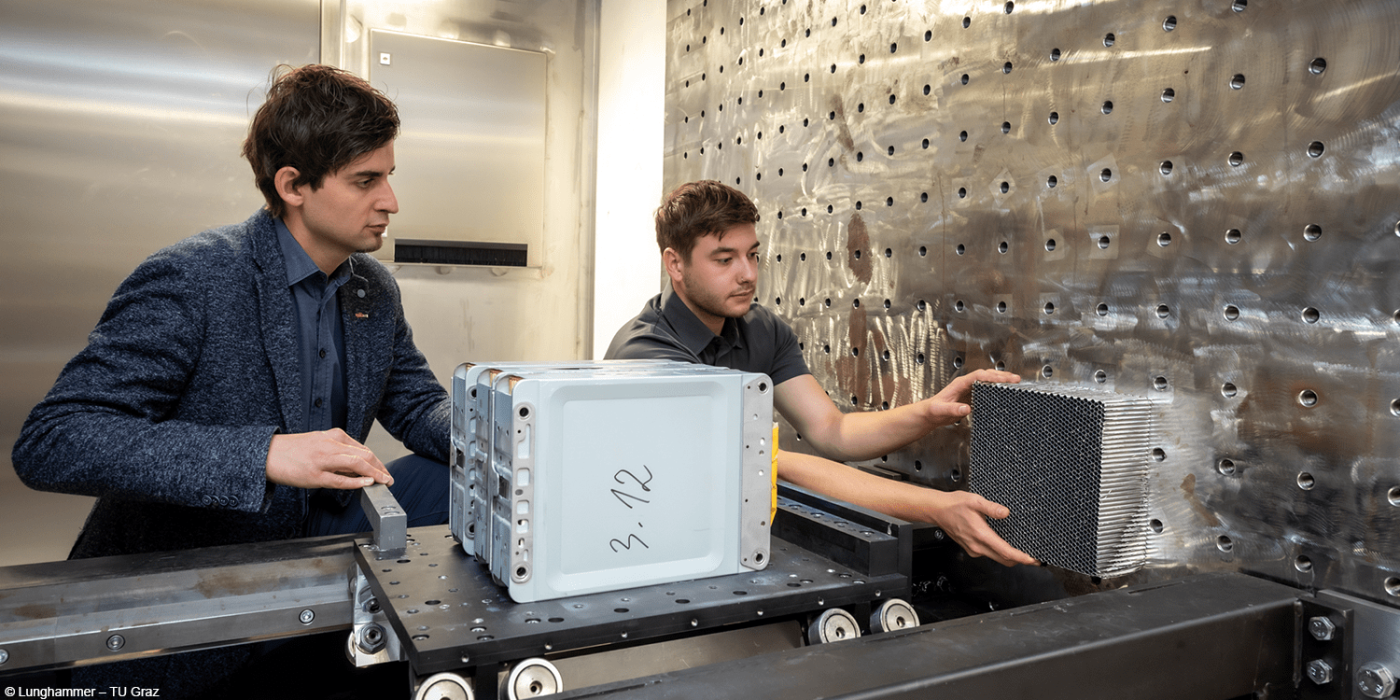TU Graz SafeBattery project details battery ageing
Researchers at TU Graz, together with industry partners Audi, Daimler, and AVL, have looked into the entire battery lifecycle to detail ageing processes. The SafeBattery project ultimately aims to define parameters for the re-use of discarded EV batteries.
What they first found, however, is that batteries get safer with age. The studies show that the older a traction battery of electric vehicles is, the less dangerous it is.
Using crash tests, simulation models and calculations, the researchers determined that vibrations and accelerations, common issues the car industry is concerned with, hardly affect the behaviour of batteries.
However, constant charging and discharging lead to significant mechanical and electrical changes. Battery cells aged in this way have a higher stiffness under mechanical load. “But the changes don’t necessarily mean that batteries become more dangerous with age. On the contrary. The sum of the influences makes them safer over time because they also lose electrical energy,” explains project manager Christian Ellersdorfer at the Institute of Vehicle Safety.
The team’s investigations show that cells with a strongly reduced capacity also experience a less dramatic so-called thermal runaway after an internal short circuit, meaning the reduced energy potential of aged batteries decreases the likelihood of accidental battery fires.
For now, the findings are to serve manufacturers to know better what to expect from a battery cell. This enables material-saving designs and greater efficiency, explains Ellersdorfer. “Until now, the battery was installed in such a way that deformations could be ruled out in every conceivable scenario. Now manufacturers can make better use of the installation space. And safety checks on a new cell are valid for the life of the battery.”
In a second project, however, the researchers want to go a step further and look into re-use scenarios. The COMET project SafeLIB looks at the changes in greater detail with other partners LIT Law LAB, Infineon, Fronius, Mercedes. “Used batteries with a power capacity of 80 per cent are no longer suitable for electric vehicles, but they are very suitable for stationary energy storage or machine tools. For the first time, we are determining generally valid parameters in the area of safety,” Ellersdorfer describes the follow-up project.
The research will also consider the legal framework for reusability, for example, liability for consequential damage. The project aims to define a “state of safety” in line with the “state of health”, to assess the state of a battery over the entire life cycle.
SafeLIB runs for four years until 2025. The Austrian Research Promotion Agency FFG is funding the project at the Battery Safety Center Graz with a total of six million euros.





0 Comments